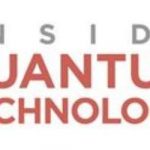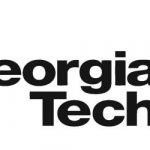IQT Interviews Bo Ewald, CEO of ColdQuanta

(InsideQuantumTechnology) Welcome to the first of IQT’s new interview series in which we speak with the individuals leading what today’s interviewee calls The Quantum Wave.” We launch our series with Bo Ewald, CEO of ColdQuanta.
ColdQuanta, Inc., based in Boulder, Colorado with offices in Madison, Wisconsin and Oxford, UK. ColdQuanta has a revolutionary “Quantum Core” that uses laser-cooled atoms to create quantum systems, i.e., Quantum Atomics. ColdQuanta designs and manufactures unique products enabling ultracold-atom-based quantum devices and related quantum research and development.
Bo Ewald is CEO of ColdQuanta, his second quantum startup. Bo brings a tremendous amount of experience in the quantum technologies sector having served as President of D-Wave Systems for six years and as a founding member of the Quantum Industry Coalition. Prior to D-Wave, Bo had a number of roles at supercomputing leader Cray Research including President, COO and CTO. He also served as CEO of SGI and earlier as COO of SGI. Bo has led several start-up companies in the CEO/Chairman position including Linux Networx, e-Stamp, and Perceptive Pixel. He started his career at the Los Alamos National Laboratory working on computer graphics and high performance computing and ran the Computing Division at the laboratory for several years.
IQT: Bo, you moved into the quantum computing’s commercialization arena very early on. What sparked your interest and career transition into the quantum computing sector at what is still an early time in the field?
BO EWALD: I was working at the Los Alamos National Laboratory (LANL) in 1976 when the first Cray arrived. By the 1980’s LANL had become the world’s most powerful scientific computing facility with 500 people and five Crays and many other systems. It was great time to be there.
LANL hosted a 40th anniversary colloquium in 1983 and invited presentations from people who had been at Los Alamos during the Manhattan Project. The first speech was by Nobel Prize winner Richard Feynman who is known for his work in quantum electrodynamics. But this time, Feynman talked about a new idea “Building Tiny Computers from Quantum Mechanical Laws” and I thought “Wow, and how interesting and different.”
Later that week Feynman and other well-known Nobel Prize winning physicists wanted to see the modern Los Alamos. I was escorting one of the groups and was standing in front of a Cray supercomputer explaining that it could do about 160 million calculations a second and that we had five of them and with the other computers our center could do a billion calculations a second, the most in the world at the time.
Feynman said, “You know young man, someday all these Crays are going to be replaced by quantum computers.” I think I said something unintelligible back to him.
So, since I first heard of the idea in 1983, it has been a long slow process before the real quantum machines started to appear.
A few years ago after Microsoft bought Perceptive Pixel, I talked to some people and investors I knew at D-Wave because as one said, “Arguably you know as much as anyone about HPC.”
D-Wave had been in existence by then for about 10 years with a unique architecture that Is more like a quantum analog computer. So, the challenge for the company was to see if it could scale up the systems, and our job was to see if we could get customers interested in the architecture and get parts of their applications to run on it. In the end, whether it be HPC or now QC, customers as the same three questions: “Can you run my application, how fast, what does it cost??”
So at D-Wave, we set out to answer those questions and to work with customers interested in trying and determining early prototype applications. We were successful at securing Google/NASA, Lockheed, LANL and many others as D-Wave customers. In fact, I believe that D-Wave has about 100 paying customers on their systems now with many “proto-apps” as I called them running.
IQT: We have the corporate overview from ColdQuanta’s website. Founded in 2007 as a spinoff from the University of Colorado, Boulder, by Dana Anderson who is a Fellow of JILA and Professor in the Dept. Of Physics and Electrical & Computer Engineering at the University of Colorado.
Since its inception ColdQuanta has had an active pipeline of federally- and commercially-funded research and development efforts in quantum science and quantum devices. These efforts have resulted in a range of commercial products from compact ultrahigh vacuum chambers to complete turnkey ultracold atom systems, one of which is currently operating on the International Space Station. In 2018 the company closed on $6.75 million in financing led by Maverick Ventures with participation from Global Frontier Investments.
IQT: What particular strengths would you want IQT’s audience of quantum tech professional interested in commercialization to know about your company after this interview?
EWALD: First, a little background, for the past 12 years ColdQuanta developed and fielded quantum technology and systems using lasers to super cool atoms—a process that is going to have great advantages I believe. The technology is based on Nobel prize-winning research from the 90’s. ColdQuanta has secured $30 Million R&D grants from U.S. government agencies like DARPA and NASA with smaller amounts from the UK over the years to develop the underlying technologies.
The technology is unique in that it cools atoms in a vacuum and creates a new quantum material, i.e. “quantum gas” rather like a fifth state of matter. We have solid, liquid, gas, and plasma. Some people consider the quantum gas created by cooling atoms with lasers as another state of matter. The technology is quite amazing – the lasers stop the motion of the atoms in the “cell” cooling them, in some cases into the nanoKelvin range. You’ll remember that the superconducting quantum systems use dilution refrigerators to get to about 10 milli-Kelvin, the cold atom technology is much, much colder which will show great advantage over time.
In addition to the roughly $30M of government R&D investment, the company raised a $6.75M Seed round of financing in 2018 that has enabled us to strengthen the foundation of the company and work on several projects that we believe will help speed the creation of families of quantum products.
IQT: Your website points out that ColdQuanta’s strategic product development focuses on secure quantum communications networks, quantum inertial sensing and navigation, radiofrequency (RF) sensing, and quantum information system applications. Are you moving into any larger scale device manufacturing in mind or is that underway now with your new product roadmap?
EWALD: When most people think of “quantum”, they think immediately of the quantum computing market, but that is only one of about 10 possible quantum tech product/device paths. ColdQuanta believes the markets for other applications are even larger than quantum computing in both national security and commercial markets. There are options in navigation, and communications, etc.
The company worked on a NASA program to create a “Cold Atom Laboratory” on the International Space Station. The heart of that laboratory is a ColdQuanta system that we call our “Quantum Core” – creates a quantum gas – a so-called Bose Einstein Condensate. Our system is rugged enough to be launched on a rocket, installed on the space station, and is accessed remotely by users on earth. That program really provides great confidence that we’ll be able to build families of rugged, reliable, ground breaking products.
Among the products that we believe are possible in the near-term are:
1) A Quantum positioning system (QPS). We all rely on GPS in our cars, phones, banking systems, networks, etc. not only for location, but timekeeping and synchronization. But, today’s GPS receivers can be spoofed and there have many documented cases where ships GPS systems showed them to be on land, etc. We at ColdQuanta think we can create a quantum positioning that keeps accurate time and precise location of the user without being spoofed, without satellites, and the customer could keep their location completely private.
2) A new category of systems that perform real-time Quantum AI-like analyses .
3) A Quantum Computer We believe we will be able to use cold atom technology to create quantum computers that scale faster than other gate model quantum computers. All atoms of an element are identical – so as we make qubits using cold atoms, we don’t have to struggle to try to get them to be identical, they are! And they operate at temperatures much colder than the superconducting systems. So, we are optimistic that cold atoms have some significant advantages compared to other technologies.
NOTE FROM IQT: ColdQuanta was featured in Science Magazine for its role in neutral atom quantum computing:
https://www.sciencemag.org/news/2018/09/arrays-atoms-emerge-dark-horse-candidate-power-quantum-computers.
IQT: Do you have any commercial products already online?
EWALD: Yes, we have several commercial products that are in use, but the ColdQuanta Quantum Core that is at the heart of NASA’s Cold Atom Laboratory is the best indicator of things to come.
NASA launched a ColdQuanta system in space over a year ago as part of its Cold Atom Laboratory (CAL). The system was installed in the International Space Station’s U.S. science lab in late May 2018 and is now producing clouds of ultracold atoms known as Bose-Einstein condensates. (A video of CAL is here https://www.jpl.nasa.gov/news/news.php?feature=7202
CAL is a multiuser facility dedicated to the study of fundamental laws of nature using ultracold quantum gases in microgravity. Cold atoms are long-lived, precisely controlled quantum particles that provide an ideal platform for the study of quantum phenomena and potential applications of quantum technologies. This NASA facility is the first of its kind in space. It is designed to advance scientists’ ability to make precision measurements of gravity, probing long-standing problems in quantum physics (the study of the universe at the very smallest scales), and exploring the wavelike nature of matter.
All this is important because NASA’s JPL Project has proved that ColdQuanta’s cold atom technology can be useful and durable. The technology was used to build a device rugged enough to withstand launch pressures and vibrations on a rocket, and successful installation by astronauts not experienced with its design. It functions while running on the space station and is proving very useful in experiments.
If you are part of NASA’s cold atom lab program, you can use the cloud and access this quantum machine and create quantum gas and material and perform experiments.
IQT: IBM has stressed the value of collaboration in the quantum sector and I see that you joined the Quantum Exchange in Chicago. How do you and Cold Quanta view collaboration and can you share any additional collaborative efforts?
EWALD: We are early in quantum tech applications that I really think partnership and collaboration make sense. And, we are so early in the creation of the industry that I think we all benefit when we work together – we are in the phase of “a rising tide lifts all quantum boats.” For example, IBM, Strangeworks, QC Ware and Google have all created a software architecture and tools.
In our case, at ColdQuanta these software frameworks should enable us to run as fast as we can doing what only we can do and combine that with work that others have done.
IQT: Are you concerned about the “hype” factor –now we are seeing the terms “Quantum Winter” and “quantum apocalypse” in the tech press? Are those concerns impacting ColdQuanta or do you see that concern becoming a problem in the future?
Ewald: I’ve seen AI winters a couple of times and I experienced the Internet apocalypse.
I am concerned about the hype being ahead of the reality in quantum computing. We are making strong steady progress in quantum computing, but it has taken a long time. You’ll remember Feynman’s talk about quantum computing was over 35 years ago.
I think IBM, IonQ, Rigetti, Google and D-Wave are able to run snippets of applications, many of which are optimization problems. But, they are snippets of applications, not the entire application or only a small problem size. So, I’ve called them proto-apps, and some have shown some quantum advantage, but so far only for small problems.
D-Wave has one of first great quantum advantage examples. Volkswagen CIO Martin Hoffman wanted to try a real problem on a quantum computer and decided to try on D-Wave and others. Data scientists and AI experts from Volkswagen worked with D-Wave’s machines and experts to see if they could optimize the routes of taxis in a city to minimize congestion and improve travel times. Volkswagen was able to demonstrate some quantum advantage by optimizing traffic flow for 100-200 taxis in Beijing going from downtown to airport. But, that is just a start, the real problem is to see if you can optimize the flow of the thousands of taxis in Beijing.
In the end, quantum computers have to be able to help with those three user questions: “can you run my application, how fast, and what does it cost?”. If there are enough examples of quantum advantage when running real world applications, even for small problems, we’ll see a quantum spring.
IQT: Is there any thought you want to leave our readers?
EWALD: Be patient and persistent. The Quantum Wave is the third wave of the information age and will be as important as the first wave (Digital Electronics) and the second wave (Photonics and Communications). When the transistor or the laser were first invented, no one imagined the many many applications and products they would create. The Quantum Wave will be every bit as big.
Interview by Sandra Kay Helsel, PhD., Editor of IQT News.
Email IQT if you are interested in being interviewed or want to suggest an interviewee.



















